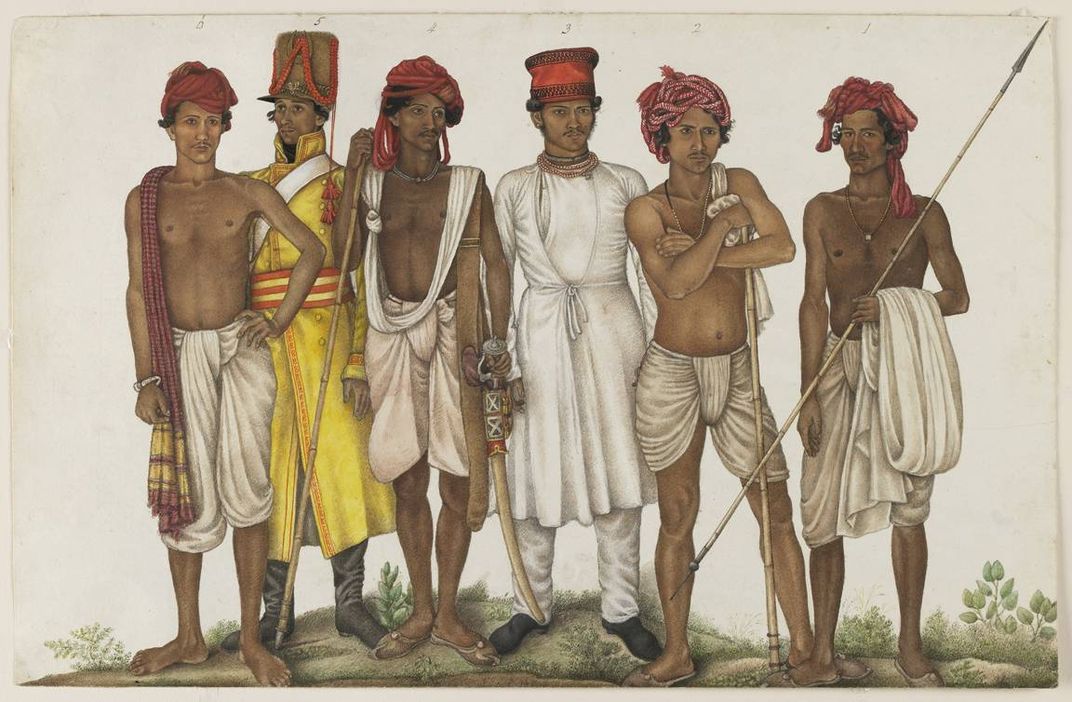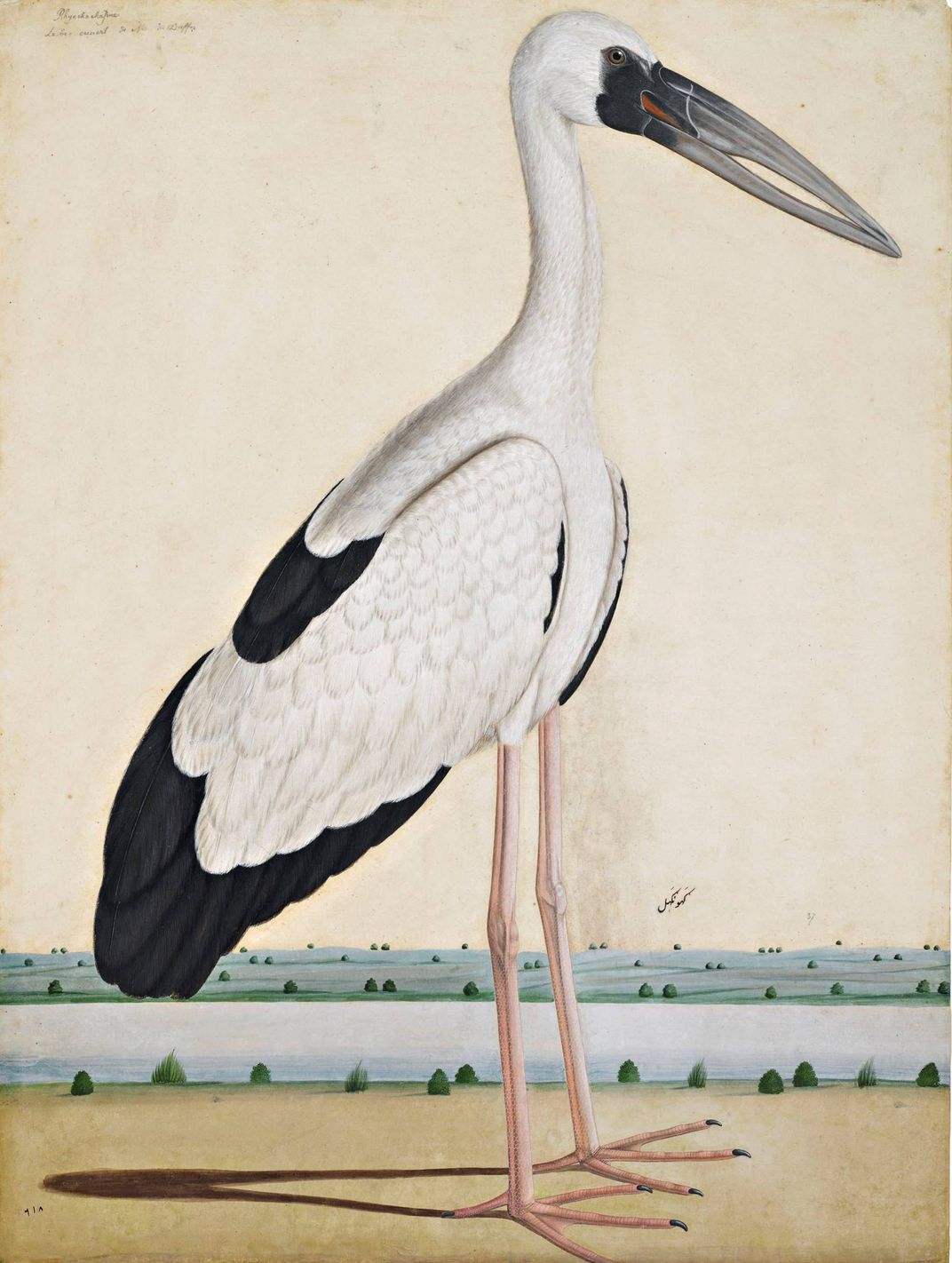London Exhibit Celebrates Indian Artists Who Captured Natural History for the East India Company
Paintings once anonymized as “company art” will finally be labeled with the names of their creators
/https://tf-cmsv2-smithsonianmag-media.s3.amazonaws.com/filer/d2/66/d266f8a1-2bae-4e4b-99c1-91f75cc68837/dec2019_d17_prologue.jpg)
Indian artists, once erased from history after immortalizing the wonders of the natural world in paint, are finally getting their due.
A new exhibition at the Wallace Collection in London showcases 109 paintings of people, plants and animals commissioned by East India Company officials between the 1770s and 1840s. Titled “Forgotten Masters: Indian Painting for the East India Company,” the show writes long overlooked individuals back into the cultural record. After centuries of anonymity as “company art,” the pieces on view finally bear the names of their Indian creators.
“Many artists featured in the show are some of the greatest Mughal artists of all times, yet these names are not well-known,” curator William Dalrymple tells the Indian Express’ Pallavi Chattopadhyay. “The point of the show is [to] get some recognition for these artists.”
The traders of the East India Company, established by English merchants in 1600, initially set sail in search of fortune. But in the 1770s, officials based in India entranced by the region’s flora and fauna commissioned local artists to paint them, as well as scenes of everyday village life.

Though ordered to use European paper and watercolors, the artists painted in the late Mughal style, turning deft brush strokes into small, bright-eyed mammals and thick green foliage. The result was an unprecedented hybrid of East and West, mirrored in the mix of pujaris, or Hindu priests, and British soldiers that populate several paintings.
Some of the products are “widely recognized as among the very greatest glories of Indian painting” and will at last receive recognition in “Forgotten Masters,” writes Dalrymple for BBC News.
Hired by the wealthy family of Sir Elijah Impey, artists Shaikh Zain ud-Din, Bhawani Das and Ram Das painted exotic animals like pangolins, squirrels and cheetahs, often surrounded by life-size plants dripping with fruit. As Eddy Frankel reports for Time Out, painters including Chuni Lall and Rungiah strayed more botanical, featuring yams and squash in their nature scenes. Though rendered in European materials, the paintings captured India’s natural history in a way that only locals could.

Some of the exhibition’s most stunning wildlife paintings feature fruit bats, likely rendered by an artist in the circle of Bhawani Das. Bright-eyed and stern, often with their impressive wingspans on full display, the bats are detailed to look almost three-dimensional, brimming with an inner life that nearly bursts off the page.
Natural history isn’t the only field explored in “Forgotten Masters”: Paintings on view also depict people, from merchants to courtiers and beggars, gathering at markets or participating in rituals. Yellapah of Vellore even turned his brush strokes inward, painting himself engaged in (what else?) his own artwork, according to the Guardian’s Jonathan Jones.
Though some of the paintings, including selections from the Impeys’ original collection, have fetched hundreds of thousands of dollars at auction, others have languished in near obscurity since their creation. And all have suffered at least some degree of anonymity, due in part to lingering tension over colonialism, Dalrymple tells Kabir Jhala of the Art Newspaper.

Now, for the first time, the East India Company paintings will be celebrated and named in the same place. Borrowed from private collections and museums including the Victoria and Albert Museum, the British Museum, the Metropolitan Museum of Art and the Smithsonian Institution, the works will remain on display until April 19, 2020.
Despite arriving several centuries late, proper attribution will do more than right a wrong for these long-gone artists.
“We hope this show can be … the first step in a larger conversation around understanding the political context of our colonial past,” Wallace Collection Director Xavier Bray tells Jhala. “Although we find it difficult to discuss … it is necessary in order to move forward.”
“Forgotten Masters: Indian Painting for the East India Company” is on view at the Wallace Collection in London through April 19, 2020.
/https://tf-cmsv2-smithsonianmag-media.s3.amazonaws.com/accounts/headshot/10172852_10152012979290896_320129237_n.jpg)
/https://tf-cmsv2-smithsonianmag-media.s3.amazonaws.com/accounts/headshot/10172852_10152012979290896_320129237_n.jpg)